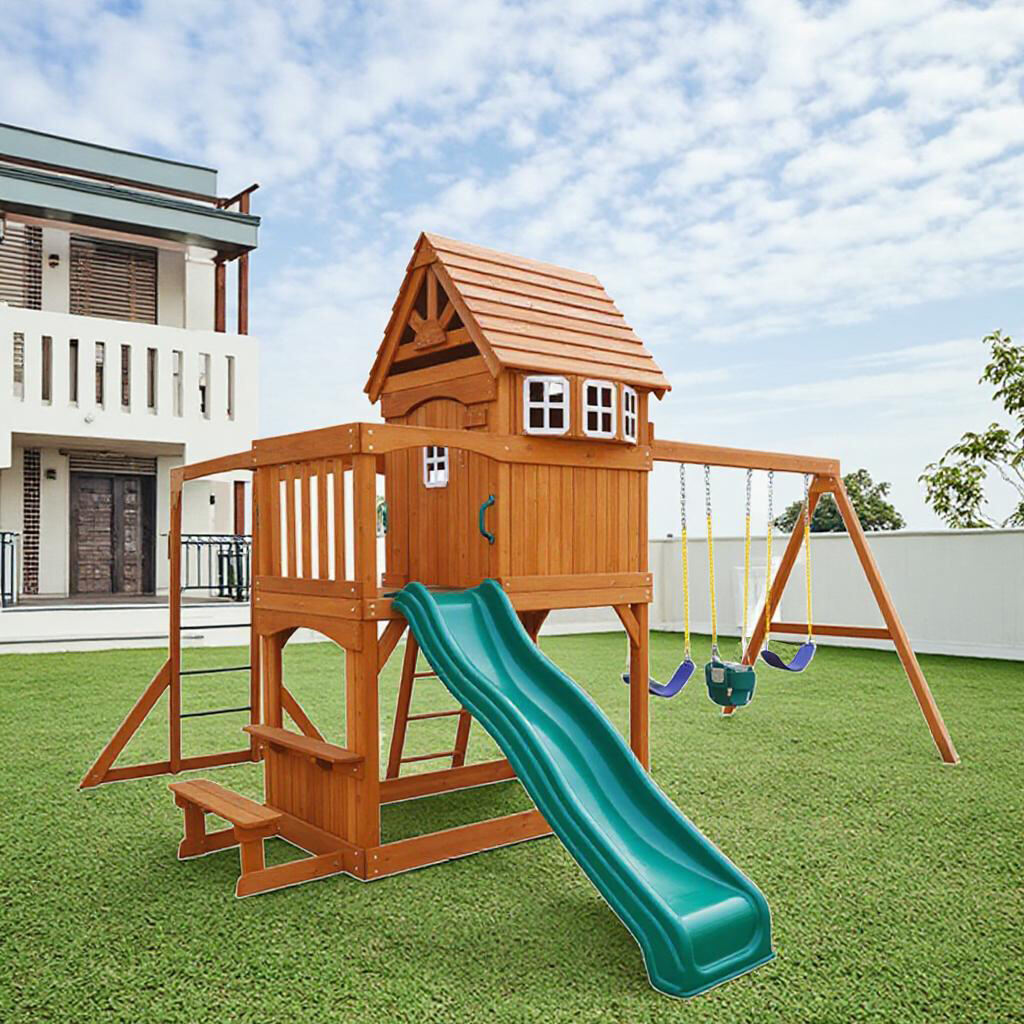Good playground design goes beyond simple entertainment value. These spaces actually become important places where kids develop socially while exploring their surroundings and picking up new skills. Custom playground designs let us create outside areas that really work for different groups - whether it's a neighborhood park, school yard, or shopping center. When putting together these special play areas, we need to think about everything from what materials will last longest to making sure all the equipment meets safety standards. The best results come when we mix creative ideas with practical considerations and durable construction methods that stand up to years of use.
Playgrounds are no longer limited to generic structures. With tailored designs, developers can incorporate cultural elements, age-specific play zones, and inclusive equipment that resonates with the needs of their users.
A thoughtfully designed playground promotes more than just physical activity. Climbing walls, swings, slides, and interactive panels encourage problem-solving, cooperation, and spatial awareness. These elements contribute to a child's mental and physical development in a safe and engaging way.
A successful outdoor play space is the result of strategic planning. Stakeholders must consider several elements to ensure the environment is both appealing and practical.
Designing for specific age groups—toddlers, preschoolers, or school-age children—ensures that each child engages with equipment that matches their physical and cognitive abilities. For example, younger children benefit from low platforms and sensory-rich play, while older children may need climbing features and more challenging layouts.
Safety is a top priority in playground development. All components must meet international safety standards such as ASTM and EN1176, including non-toxic materials, secure anchoring, and proper surfacing to prevent injuries from falls.
Every playground site is unique. Whether it's an urban rooftop or a community park, understanding the terrain, sunlight exposure, and surrounding structures is essential. Customized design ensures that the space is fully optimized and integrated into its environment.
The choice of materials significantly affects a playground's longevity and maintenance.
Materials such as high-density polyethylene (HDPE), stainless steel, and UV-resistant coatings offer durability while being safe for children. Recycled rubber and composite lumber are popular choices for eco-conscious projects.
Choosing materials and finishes that resist wear, corrosion, and graffiti reduces long-term upkeep and keeps the playground looking new. Modular components also make it easier to replace damaged sections without overhauling the entire structure.
Tailored playground solutions allow for the integration of themes, educational content, and branding.
Custom playgrounds can reflect the local community's identity by incorporating colors, structures, or symbols that represent cultural heritage. This helps foster a sense of ownership and pride among local residents.
Interactive panels, musical features, and tactile surfaces enhance play by integrating learning opportunities. These components are particularly valuable in inclusive playgrounds that serve children with diverse abilities.
For commercial venues such as malls or theme parks, playgrounds can carry custom logos, color palettes, and design motifs that reinforce brand recognition while enhancing the customer experience.

Tailored playground solutions are applicable to a wide range of clients, each with unique goals and user groups.
Schools and kindergartens benefit from playgrounds designed to complement their curriculum. Outdoor classrooms, reading nooks, and team-based games enhance traditional education through experiential learning.
In neighborhoods and civic centers, custom play structures can promote community interaction and provide safe environments for family recreation.
Hotels, shopping malls, and resorts can add value by offering attractive, branded play areas that keep children engaged while adults relax or shop.
While tailored playgrounds may seem costly, strategic planning and scalable design options allow clients to stay within budget without compromising on quality.
Modular playground systems enable phased implementation. Clients can start with essential structures and expand over time as budgets allow or needs evolve.
Investing in high-quality, customized equipment reduces repair costs and increases the space’s lifespan. This leads to better returns and lower total cost of ownership.
Modern playground designs increasingly focus on minimizing environmental impact.
Many manufacturers now use eco-friendly production techniques and recycled materials to reduce their carbon footprint, aligning with sustainability goals and regulations.
Designs that integrate natural elements like rocks, logs, and vegetation encourage environmental awareness among children and offer a refreshing change from plastic-heavy play areas.
Tailored playgrounds are customized to meet specific user needs, site conditions, and thematic goals, offering greater flexibility and functionality than off-the-shelf models.
While initial costs may be higher, the long-term value in durability, lower maintenance, and better engagement often offsets the expense.
Tailored solutions adhere to global standards such as ASTM, EN1176, and local building codes to ensure maximum safety for users.
Yes, inclusive elements can be integrated into the design to support children with various physical and cognitive abilities.
 Hot News
Hot News2025-12-03
2025-11-03
2025-11-11
2025-11-19
2025-11-24
2025-11-27